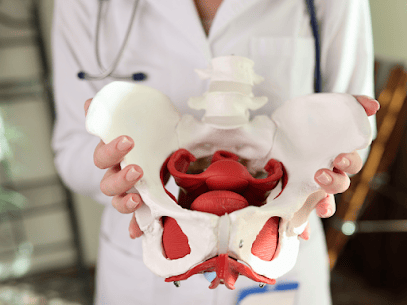Understanding Pelvic Floor Dysfunction: Causes and Symptoms

Pelvic floor dysfunction is a topic that often remains unspoken, but its impact on an individual’s quality of life can be profound. In this comprehensive guide, we will explore the causes and symptoms of pelvic floor dysfunction to shed light on this common but often misunderstood condition. By understanding the intricacies of this condition, individuals can seek early diagnosis and appropriate treatment, ultimately improving their well-being.
Introduction
Pelvic floor dysfunction is a condition that affects many individuals, yet it remains relatively unknown to the general public. This lack of awareness can lead to delayed diagnosis and treatment, which can have detrimental effects on one’s health and quality of life. This article aims to shed light on the causes and symptoms of pelvic floor dysfunction, emphasizing the importance of early intervention.
What is Pelvic Floor Dysfunction?
The pelvic floor is a group of muscles and tissues that form a supportive structure at the base of the pelvis. These muscles play a crucial role in various bodily functions, including bladder and bowel control, sexual function, and support of pelvic organs. Pelvic floor dysfunction occurs when these muscles and tissues do not function properly.
Causes of Pelvic Floor Dysfunction
1. Childbirth
Childbirth, especially vaginal delivery, can lead to stretching or damage to the pelvic floor muscles, increasing the risk of dysfunction later in life.
2. Aging
As we age, natural wear and tear on the pelvic floor muscles can occur, making them less effective in maintaining proper function.
3. Obesity
Excess body weight can place increased pressure on the pelvic floor muscles, leading to dysfunction over time.
4. Chronic Constipation
Straining during bowel movements due to chronic constipation can weaken the pelvic floor muscles.
5. Surgery
Certain surgical procedures, such as those involving the pelvic area, can damage or weaken the pelvic floor muscles.
6. Heavy Lifting
Regularly lifting heavy objects without proper technique can strain the pelvic floor muscles.
7. High-Impact Sports
Participating in high-impact sports can lead to repetitive stress on the pelvic floor muscles, potentially causing dysfunction.
8. Genetics
Some individuals may have a genetic predisposition to pelvic floor dysfunction, making them more susceptible to its development.
Statistics and research findings support the association between these causes and the prevalence of pelvic floor dysfunction. For instance, a study published in the “International Urogynecology Journal” found that nearly 25% of women experience pelvic floor dysfunction, with childbirth being a significant contributing factor.

Symptoms of Pelvic Floor Dysfunction
1. Incontinence (Urinary and/or Fecal)
One of the most common symptoms is urinary incontinence, which can range from mild leakage to complete loss of bladder control. Fecal incontinence, though less common, can also occur.
2. Pelvic Pain
Individuals with pelvic floor dysfunction may experience persistent pelvic pain, often described as a dull ache or pressure in the pelvic region.
3. Sexual Dysfunction
Difficulty achieving or maintaining an erection (in men) or pain during sexual intercourse (in both men and women) can be indicative of pelvic floor dysfunction.
4. Constipation
Chronic constipation can be both a cause and a symptom of pelvic floor dysfunction, creating a vicious cycle of discomfort.
5. Frequent Urination
Frequent and urgent urination, even when the bladder is not full, is another common symptom of pelvic floor dysfunction.
6. Pelvic Organ Prolapse
In severe cases, the pelvic floor muscles may weaken to the point where pelvic organs, such as the uterus or bladder, drop out of their normal positions.
These symptoms can have a significant impact on an individual’s daily life, leading to embarrassment, discomfort, and a reduced quality of life.
Who Is at Risk?
While pelvic floor dysfunction can affect anyone, certain demographics and groups may be at a higher risk. Women who have given birth vaginally, individuals over the age of 50, those who are overweight, and people with a family history of the condition should be especially vigilant about recognizing potential symptoms.
Diagnosing Pelvic Floor Dysfunction
Diagnosing pelvic floor dysfunction typically involves a combination of physical examination, medical history review, and, if necessary, imaging tests such as ultrasound or MRI. A thorough evaluation is essential to determine the severity of the condition and develop an appropriate treatment plan.

Treatment Options
Treatment options for pelvic floor dysfunction vary depending on the severity of the condition. Some common approaches include:
- Pelvic Floor Physical Therapy
Pelvic floor physical therapy involves targeted exercises and techniques to strengthen and rehabilitate the pelvic floor muscles.
- Medications
In some cases, medications may be prescribed to manage symptoms such as incontinence or pain.
- Lifestyle Modifications
Making healthy lifestyle choices, including maintaining a healthy weight, managing chronic constipation, and avoiding activities that strain the pelvic floor, can help prevent and manage dysfunction.
- Surgical Interventions
In severe cases, surgical procedures may be recommended to repair or support the pelvic floor muscles and organs.
Prevention and Management
Preventing pelvic floor dysfunction and effectively managing its symptoms are crucial steps in maintaining long-term well-being. You can take proactive measures to safeguard your pelvic health by incorporating the following strategies into your daily routine:
1. Pelvic Floor Exercises (Kegels): Regularly dedicating time to Kegel exercises can significantly strengthen and maintain the pelvic floor muscles. These exercises are simple, discreet, and can be done virtually anywhere, making them an accessible option for enhancing pelvic health.
2. Healthy Lifestyle Choices: Supporting your overall health is vital in preventing pelvic floor dysfunction. This involves maintaining a balanced diet rich in nutrients, staying adequately hydrated, and engaging in regular physical activity. A healthy lifestyle contributes to the overall strength and resilience of your pelvic floor.
3. Weight Management: Maintaining a healthy weight is not only beneficial for your overall well-being but also reduces the risk of exerting excess pressure on your pelvic floor muscles. Achieving and maintaining a healthy weight through diet and exercise can positively impact your pelvic health.
4. Proper Lifting Techniques: Learning and implementing proper lifting techniques in your daily activities can significantly reduce the strain on your pelvic floor muscles. By avoiding improper lifting methods, you minimize the risk of overloading these crucial structures.
Incorporating these strategies into your daily life can go a long way in promoting and safeguarding your pelvic health. Taking a proactive approach to prevention and management can help you enjoy a more comfortable and fulfilling life while minimizing the risk of pelvic floor dysfunction.
Conclusion
In conclusion, pelvic floor dysfunction is a common but often underestimated condition that can have a significant impact on an individual’s life. Recognizing the causes and symptoms of pelvic floor dysfunction is the first step toward early diagnosis and effective treatment. If you suspect you may have pelvic floor dysfunction, seek medical advice promptly to improve your quality of life.

